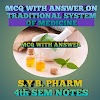HISTORY OF MICROBIOLOGY (PART 3)
The combined efforts of many scientists and most importantly Louis
Pasteur and Robert Koch established the Germ theory of disease.
The idea that invisible microorganisms are the cause of disease is called germ
theory.
Lord Joseph
Lister (1827-1912): A
famous English surgeon is popularly known “Father of antiseptic surgery” He
concluded that sepsis or wound infection may be due to microbial growth derived
from the atmosphere.
Joseph Lister was the first to introduce aseptic techniques for control
of microbes by the use of physical and chemical agents which are still in use
today.
He developed a system of antiseptic surgery designed to prevent
microorganisms from entering wounds by the application of phenol on surgical
dressings and at times it was sprayed over the surgical areas.
He also devised a method to destroy microorganisms in the operation
theatre by spraying a fine mist of carbolic acid into the air.
John Tyndall (1820–1893): An English physicist conducted experiments
in an aseptically designed box to prove that dust indeed carried the germs. He
demonstrated that if no dust was present, sterile broth remained free of
microbial growth for indefinite period even if it was directly exposed to air.
He discovered highly resistant bacterial
structure, later known as endospore.
Prolonged boiling or intermittent heating was
necessary to kill these spores, to make the infusion completely sterilized, a
process known as Tyndallisation.
Richard petri (1887): Koch’s assistant designed a special plate to hold solid culture media
which is referred as ‘petri plate’. this plate has great significance in
microbiology.
Fanne Eilshemius (1850 – 1934): Koch’s assistant first proposed the use of agar in
culture media. Agar is better than gelatin because of its higher melting point
(96oc) and solidifying (40 oc) points.
Edward Jenner (1749-1823): English physician who was the first scientist
who prevent small pox by the technique vaccination. He first discovered the
technique vaccination.
Paul Ehrlich (1854-1915): In 1904 found that the dye Trypan Red was active
against the trypanosome that causes African sleeping sickness and could be used
therapeutically. This dye with antimicrobial activity was referred to as a
‘magic bullet’.
He discovered the treatment of syphilis by using arsenic (Arsphenamine).
He studied the toxins and antitoxins in quantitative terms and laid foundation
of biological standardization.
He also invented the precursor technique to gram staining bacteria.
Alexander Fleming (1881
– 1955): Scottish physician and bacteriologist. Observed
bacterial staphylococci colonies disappearing on plates contaminated with mold.
Fleming extracted the compound from the mold responsible for destruction of the
bacterial colonies. The product of the mold was named penicillin, after the
Penicillium mold from which it was derived. He was the
first scientist who discovered words first antibiotic substance benzyl
penicillin (Penicillin G) from the mould penicillium
notatum in 1928 that destroy many pathogenic bacteria and receive Nobel Prize
in 1954.
Waksman: Discovered another antibiotic, streptomycin produced by two
strains of actinomycete, Streptomyces griseus in
1944. Waksman received the noble prize in 1952 for his discovery of
Streptomycin used in the treatment of tuberculosis, a bacterial disease caused
by Mycobacterium tuberculosi.
Dr. Paul R. Burkholder (1947): Identified
the microorganism that produced antibiotics, such as chloramphenicol
(Chloromycetin) from Streptomyces venezuelae.
Dr. B.M.
Dugger (1948): Identified
the microorganism that produced antibiotics, such as Aureomycin from S. aureofaciens
Finlay(1950): Terramycin from S.
rimosus.
THE MODERN ERA:- Following are the Nobel laureates in modern era with their discoveries.
YEAR
|
SCIENTIST
|
DISCOVERIES
|
1901
|
Von
Behring
|
Diphtheria antitoxin
|
1902
|
Ronald
Ross
|
Transmission of malaria
|
1905
|
Robert
Koch
|
Research on tuberculosis
|
1908
|
Mechinkoff
|
Work on immunity & Phagocytosis
|
1945
|
Alexander
Fleming
|
Penicillin
|
1962
|
Watson,
Crick
|
Structure of DNA
|
1968
|
H.Khorans,
Holley
|
Genetic code
|
1976
|
B.S
Blumberg
|
Antigen imp in diagnosing serum hepatitis
|
2002
|
Malcom
.k Brenner
|
Genetic regulation of organ development
|
2008
|
Harald
zur Hausen
|
HP virus cause cervical cancer, Hiv virus
|
2011
|
Hoffman,
Steinman
|
Role of dendritic cell in adaptive immunity
|
2017
|
Frank,
Henderson
|
Developed cryo-electron microscopy
|
CLICK BELOW TOPIC TO READ
1. |























0 Comments
Please do not enter any spam link in the comment box.